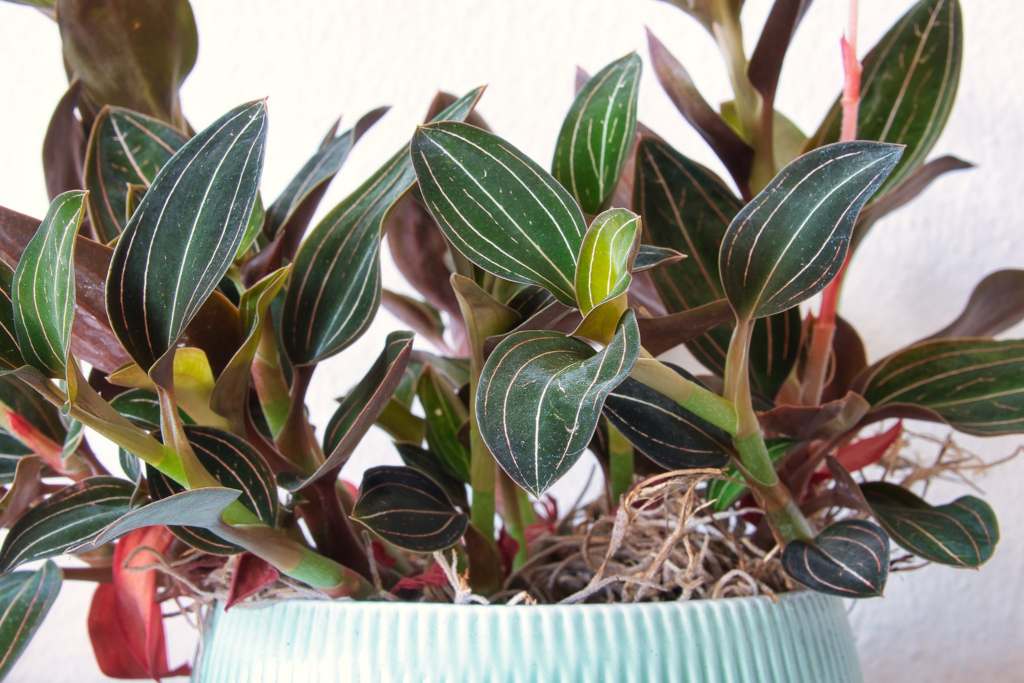What is Little Jewel Succulent?- How to Grow Little Jewel ‘Pachyveria Glauca’?
Who would not like to grow a plant that doesn’t require much care? Here, I have something new for you. Do you want to know what that is?
Here, I am talking about Little Jewel Succulents, which are so popular for their unique adaptations, making them low maintenance with minimum water requirements. Do you know what makes them plants that require less water? In short, they are succulents that have thick, fleshy leaves and stems, allowing them to retain water so that they do not need watering as frequently as other plants.
Are you interested in growing them in your garden? For that, you need to scroll down to where you will know the way to grow a Little Jewel.
Key takeaways:
- These plants require minimal care and can live through even if dilapidated.
- Although all plants flourish well if cared for and noticed by the owner. Thus with minimum water, good sunlight, and a few sweet words from the owner, they can make the best companions for those who reside alone as they add liveliness to the place.
- These plants can do wonders with just a bare minimum, thus catching the eyes of Millennials ever since their existence.
| Common Name | Little Jewel Succulents |
| Botanical Name | Pachyveria ‘Glauca’ |
| Soil | Well draining soil |
| Water | Little or bare minimum water requirements until the soils are dry completely. |
| Flowering/Nonflowering | Flowering, The plant bears small peach flowers in late winter and early spring |
| Flower colour | Peach |
| Specialties | Easy to cultivate and maintain. Very easy to propagate. Aesthetic and eye-catchy. Well suited for growing in rock gardens or succulent gardens or even a houseplant. It is a summer dormant. |
| Toxicity | Generally a non-toxic plant. |
| Height | 3″ in length while growing and 6″ highest at maturity |
| Width | 3″ wide while growing and a maximum 6″ wide at maturity |
| Sun Exposure | Full to partial sun exposure |
| Temperature requirements | Between 20-35 degrees Celcius |
| Hardiness (The ability to endure difficult weather conditions) | Not cold hardy |
Why is Succulent so trendy?
Succulents have gained attention among Millennials, and every Millennial household might consist of them. Millennials are so attracted to or cling to house plants, due to the increasing screen world time and decreasing contact with the natural world.
Planting jewel succulents makes them feel more connected to nature. Not only among Millennials but succulent plants or any other houseplants are also trendy nowadays due to their low maintenance and eye-catching aesthetics that they add to the space.
What are the benefits of growing Jewel Succulents?
- They can help purify the air around the house like Lavender, Peace Lily, Monstera Deliciosa, Snake Plant, Barberton Daisy, Chinese Evergreen, etc.
- They can brighten up a home in any climatic condition.
- With just a bare minimum from the owner, they can make the best companions for those who reside alone as they add liveliness to the place.
- Their adaptation to any place makes them so unique and eye-catching.
- They can add fresh oxygen to the place.
- They hold the power of improving humidity levels in the house.
- Succulents improve Air quality.
- According to Feng Shui, Succulents can bring wealth, good fortune, and prosperity.
- Succulents have high decorative value.
- Succulents are easy and simple to propagate.

What is a Succulent Garden? Why is Succulent so popular for landscapes?
A Succulent garden also known as a “Cactarium” is a garden dedicated to, especially cacti or any kind of succulents. Succulent gardens are very easy to grow and maintain. Their thick, fleshy leaves and stems, and also their larger roots allow them to retain water so that they do not need watering as frequently as other plants. These plants require minimal care and can live through any difficulties thus making them full hardy. Even ignorance for a while can help the plant thrive.

There are more than 10,000 different types of succulents around the world. And many among them tend to be indoor plants such as neon pothos and outdoor plants. Thus choosing succulents can be a little difficult. More breeds of succulents are continuously developed, by cross–breeding in nurseries so that the world can receive maximum benefits from these beautiful plants. Some other examples of succulent plants are Dolphin Succulent Plant, Tiger Jaws Succulent, Moonglow Succulent, Graptoveria Succulent, Little Jewel Succulent, etc.
So if an individual is unable to decide what plant to choose, these Jewel Succulents also known as ‘Pachyveria Glauca‘ can be chosen immediately. These plants are tiny and aesthetic. They can just enhance the beauty of the space wherever they are placed.
Let’s discuss more regarding the pachygyria glauca.
Pachyveria Glauca
Little Jewel is also known by their botanical or scientific name Pachyveria ‘Glauca’. These succulents are named “Little Jewels” due to their aesthetic and eye-catching spikey rosettes. These little jewels have spikey cylindrical thick leaves which are greenish-grey in shade and have reddish tips. The thick leaves have whitish lines which give a 3D impression that looks like angles.

The lines on the leaves form an optical illusion of various flat, angular, and rounded surfaces making them look like tiny and beautiful “Diamonds” or gemstones, hence the name. The flowers of this plant bloom in winter, and are peachy in color making the plant more appealing.
These plants are hybrids of Echeveria and Pachyphytum, thus bearing characteristics of both plants. The flowers bloom in early spring. The most important point about growing them is that they require sunny places to grow.
A few more details about these beautiful pachyveria glauca plants,
How to grow and care for Jewel Succulent ‘Pachyveria Glauca’?
These jewel succulents can be planted in containers with a similar type of succulents or even individually in pots. These succulents can be grown indoors too, in mild climates with bare minimum maintenance, but they grow well outdoors.
This plant enjoys full to partial sun exposure. This plant requires very little effort as it can be planted in any soil type, with well drainage facilities, little water, and a good fertilizer such as eggshell fertilizer. This plant can rapidly mound, branch, and spread to full bloom.

Little Jewel – How to Propagate Pachyveria
Using a sterile knife or a cutter, remove a stem from the main plant, allow it to dry out completely, and then place it in another pot with well-draining soil. Little Jewel how to propagate pachyveria can easily be propagated with utmost care.
Little Jewel Succulent Care
Even though succulents need minimum care and low maintenance, a few points need consideration for planting Succulents. These plants can do wonders with just a bare minimum, thus these plants are a blessing with their mere existence. Hereunder are a few points for keeping succulents healthy and happy:
- These Succulents require a good amount of sunlight or at least enough sunlight for them to flourish.
- Rotating succulents if they are placed indoors is very much necessary, to make sure all the parts get sunlight.
- Before planting any succulents, make sure about the water requirements for the plant.
- Choosing a pot or a container with proper drainage is very important.
Pachyveria Glauca vs Pachyphytum Compactum
When it comes to succulents, there are two main types – those that are soft and those that are hard. One of the most popular types of succulents is the pachyveria, which falls into the soft category.
One of the main differences between pachyverias and other succulents is their size. Pachyverias tend to be smaller than other succulents, which makes them perfect for small spaces or plants that don’t get a lot of sun. Other features that set pachyverias apart from other succulents include their waxy texture and their gray-green color.
One of the most popular pachyveria varieties is the pachyphytum compactum. This variety has a more compact shape than other pachyverias, making it perfect for smaller spaces. It also has a reddish-brown color and a waxy texture that makes it resistant to moisture damage.
Little Jewel’s Succulent Watering
The little jewel is a very popular plant because of its beautiful, shining leaves. It is also easy to care for, and it will continue to grow and thrive as long as you water it regularly. Here are some tips on how to water the little jewel:
1. Water the little jewel when the soil feels dry but not soaking wet.
2. Pour water slowly into the pot so that the soil doesn’t get wet around the roots.
3. Don’t overwater the plant, or it will get root rot.
Conclusion:
I think after reading the article, if you follow all the mentioned steps you will be successful in growing little jewel succulents in your garden.


